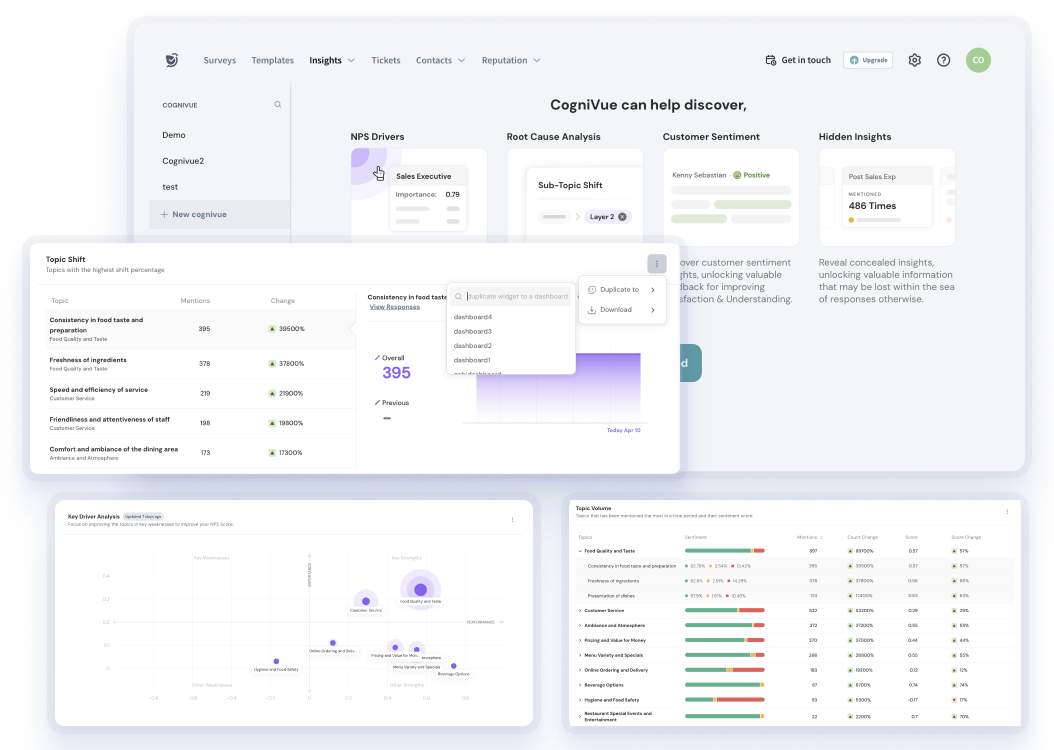Survey Answers 101: 10 Actionable Tips and Best Practices

Pragadeesh Natarajan
Last Updated: 10 December 2024
8 min read

Survey answers? One might think it to be easy to write. Well, yes and no.
The difficulty level of answering a survey depends on how the questions are asked. If the questions are leading or confusing, it will be harder for your respondents to provide accurate feedback.
Also, while writing survey answers might sound easy, getting this act together is easier said than done.
Writing effective survey answers is quite similar to writing effective survey questions. But there are things unique to writing survey answers that you need to know about.
So, in this article, we’ve put together a list of 10 actionable tips and best practices you can use to come up with precise, objective answers for your survey questions.
Ready? Let’s dive right in.
1. Begin with the End in Mind
Before you write your answers, you need to know how you’re going to use your answers.
- What are you looking to learn from your customers or users?
- What kind of response are you hoping to gather from your target audience?
You’ll want to gain in-depth information about a complex topic or just a simple response in a word or two.
And for those who want to analyze the responses, check below.
Close-ended questions are quantifiable. Therefore, it will be easier to analyze and make an informed decision. But when it comes to open-ended questions, they are quite complex.

With all the unstructured data piling up, you will need proper text analytics software to make sense of them. CogniVue is one such software you can rely on. It’s part of SurveySparrow’s offerings. To ensure these solutions perform optimally, the right infrastructure is essential. Application server software provides the backbone necessary to handle such AI-driven analytics, enabling seamless data processing and scalability. The feature uses AI (NLP, ML & so on) to analyze the vast amount of unstructured data and make sense of it. Some key insights you can get are as follows.
- Most discussed topics
- Most used keywords by the respondents
- Customer emotions
- Key drivers behind your business success
2. Use Simple Language and Avoid Jargon
Avoid using industry words that survey respondents are not familiar with.
When you use jargon, you force your customers to use a dictionary or the internet to understand what you mean. This makes them frustrated and unhappy.
Double-check if you’ve included any big, complicated words or words with multiple meanings.
Use simple, direct language that your customers will find easy to understand. If you’ve used any acronyms or abbreviations, simplify them so respondents can understand them better.
Your answer options need to be immediately understood by your customers in order to get the responses you seek.
Tip – Use AI to Generate Questions
SurveySparrow AI allows you to create surveys from scratch within minutes. It’s just like ChatGPT. Just put in the prompt and watch the magic unfold before you.

The AI feature is available in the free forever plan from SurveySparrow. So, feel free to try them out!
14-day free trial • Cancel Anytime • No Credit Card Required • No Strings Attached
3. Answer Options Should Be Mutually Exclusive
One common mistake people make is to provide respondents with two similar answer options.
It can be confusing for your respondents to pick an option if there are two or more similar answer options.
You need to make sure that your answer choices are exclusive of each other and don’t overlap.
For instance, if the question below were to be asked to respondents whose age is 35, which option would they choose? The third or fourth option?
Which age group do you fall under?
- Under 18
- 18 – 25
- 25 – 35
- 35 – 45
- 45 – 55
- 55 – 65
Here’s an example that would help the respondents quickly pick a relevant answer.
Which age group do you fall under?
- Under 18
- 18 – 24
- 25 – 34
- 35 – 44
- 45 – 54
- 55 – 65
Your answer options need to be mutually exclusive so your respondents can make clear choices.
4. Good Survey Answers are Collectively Exhaustive
As a survey researcher, you need to make sure that you provide your respondents with all the possible answers to a question.
Also, you might want to give them the Other option that lets them give an answer in their own words if none of the answer options apply to them.
Review your list of answer options to see if you’ve added all the potential answers your respondents will expect.
In the example below, Twitter and the Other option could be added as potential answer options, which the respondents might expect.
How would you like to be contacted?
5. Provide an Alternative Answer
There are several scenarios where the respondent can’t or won’t answer a question.
Maybe because it asks for their personal information and comes off too intrusive. Or perhaps the question does not apply to the respondent.
In such cases, you need to offer a way out for these respondents. If you force these respondents to pick an answer, they’ll either abandon your survey or pick an answer option that’s inaccurate.
To combat this issue, you can provide your respondents with answer options such as “prefer not to answer”, “neutral”, “does not apply”, etc.
6. Add Labels to Rating Scales
Rating or opinion scale questions provide your respondents with numerical scales that comprise numbers as answer options.
In addition to the numbers you’ve displayed, you need to add labels explaining the value of those numbers.
For instance, in an NPS survey, you ask: “How likely are you to recommend us to your friends or colleagues?”, and you provide your respondents with a numerical scale that ranges from 0 to 10.
Now you convey the value of the numbers on this scale with labels. You tell them that 0 means they’re least likely to recommend your business, and 10 means that they’re highly likely to recommend your business to their friends or colleagues.
7. Change the Order of Your Answer Options
Your respondents might be a little disinterested in completing your survey and might speed through it so they can be done with it quickly and move on to whatever interests them.
Rather than giving you answers that truly reflect their opinion, they blindly pick the same exact option for every one of your questions.
As a survey researcher, how do you get these people to give you the right answers?
One way to get them to give you accurate answers is by simply reversing the order of the answer options.
For instance, one question could range from “strongly disagree to strongly agree” and the following question could range from “strongly agree to strongly disagree”.
8. Answer Options Should Be Balanced
You need to keep your response choices balanced. Why?
Because answer options, when not balanced, can introduce bias in your surveys
For instance, if you ask your respondents: “How satisfied are you with our product?” and provide them with these answer options: “Very satisfied”, “Satisfied”, and “Somewhat satisfied”, you assume that your users are satisfied on some level, which normally isn’t the case.
Well, then, how do you keep your choices balanced?
You need to have as many positive choices as negative. You successfully eliminate bias when you have an equal number of positive and negative answer choices.
9. Do Not Use Absolutes
Absolutes are words such as “never”, “always”, “worst”, “best”, “all”, “any”, “every”, “ever”, etc.
Response choices with absolutes usually don’t apply to your respondents.
Why? Because respondents can never fully agree or disagree with answer options that use absolutes.
Absolutes make your answer options too rigid and force your respondents to pick an option that’s inaccurate.
The solution is to provide your respondents with a variety of choices that are more specific.
For instance, “once a week — once a month” rather than “never — always”.
10. Avoid Too Many Answer Options
The number of answer options you provide your respondents influences their responses.
The reliability of the answers decreases as the number of questions increases.
Respondents are overwhelmed and find it difficult to pick an option when there are way too many options to choose.
You should rank your answer options by importance and not have more than 5 or 6 options.
To conclude, how you ask your questions is as important as the answers you ask them to pick.
Use our tips above to write good survey answers that will help you collect high-quality information from your target audience.
Here are some related articles from us to help you learn more about creating and conducting surveys:
- 12 Types of Survey Questions to Gather All Kinds of Information
- The Essential Guide to Writing Effective Survey Questions
- What Are the Different Types of Surveys?
Got any questions on writing close-ended answers for your survey questions? Any interesting tips or techniques you use to write effective survey answers? Let us know about them in the comment section below.
Looking to create surveys that people love answering? Feel free to check out SurveySparrow.
14-day free trial • Cancel Anytime • No Credit Card Required • No Strings Attached

Pragadeesh Natarajan
pragadeesh
I'm a developer turned marketer, working as a Product Marketer at SurveySparrow — A survey tool that lets anyone create beautiful, conversational surveys people love to answer.

Turn every feedback into a growth opportunity
14-day free trial • Cancel Anytime • No Credit Card Required • Need a Demo?




